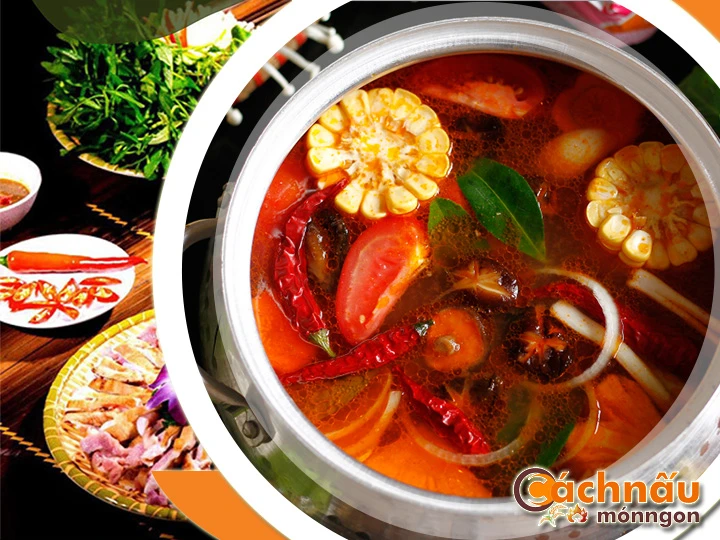This comprehensive guide explores all components you need to be aware of about rabbit hot pot, from its traditional beginnings to current adaptations, health-focused properties, and step-by-step instructions for creating the ideal dish at home. Whether you are a skilled chef or a aspiring chef, this guide will empower and educate you to hone your craft of rabbit hot pot.

DISCOVERING THE EVOLUTION AND TRADITIONS REGARDING BRAISED RABBIT DISH.
Rabbit hot pot acts as a special and heritage-rich dish with meaningful cultural roots in many areas. Its popularity stems not only from its rich flavor but also from its past and cultural importance.
1. The Beginnings focused on Hearty rabbit meal.
- Tracing Back: Hearty rabbit meal emerged in remote areas where wild hares were a common, valuable food source. In early Chinese history, it was a loved recipe, particularly during holidays.
- Spread Across Regions: In European nations like Spain, rabbit was traditionally used in soups, transforming into modern versions of rabbit casserole as the dish spread across cultures.
2. Braised Bunny Dish throughout Eastern Heritage.
- Across China: Known as China’s beloved rabbit hot pot, rabbit hot pot is popular in Sichuan cuisine, renowned for its flavorful flavors and often enjoyed during special celebrations.
- In Korea and Japan: While less frequent, rabbit hot pot is sporadically cooked as a health-focused recipe in South Korea, or incorporating elements of nabemono hot pot in the Japanese archipelago, highlighting local greens and seasonings.
- Vietnam: Although rabbit hot pot is not widely consumed daily, it is recognized during important celebrations or in remote locations where rabbit meat is easily found. It is often flavored by distinctive spices such as aromatic lemongrass, zesty ginger, and fiery chili, paired with fresh vegetables like water spinach, mustard leaves, or neptunia leaves. This dish is adored for lẩu thỏ ngon its special aroma and wholesome qualities, frequently enjoyed during family and friend reunions.
Tại Việt Nam, tuy không thuộc là món ăn được ưa chuộng hằng ngày, nhưng nổi bật trong những dịp đáng nhớ hoặc ở những miền quê, nơi thịt thỏ được tìm thấy nhiều. Thường được tẩm ướp với hương liệu như sả, hương vị gừng, và ớt, kết hợp với rau nhút. Món ăn này rất được ưa chuộng nhờ hương vị độc đáo và lợi ích sức khỏe, thường là món ăn chính trong.
3. Traditional Rabbit Cuisine within European Cuisine.
- Across France: Traditionally served as a rich stew with wine-infused broth, seasoning herbs like rosemary, and root vegetables. Rabbit hot pot is a culinary staple for special celebrations.
- Across Italy: The dish called “Cacciatore”, featuring rabbit braised in tomatoes and wine, is a early version of rabbit-based hot pots.
MASTERING RABBIT HOT POT: RECIPES AND METHODS
Rabbit hot pot is a adaptable dish that combines fresh ingredients, savory broths, and distinct techniques to create a rich and flavorful experience. Below are key steps into the key recipes and strategies to master rabbit hot pot.
The Fundamental Recipe for Rabbit Hot Pot
* Ingredients:
- 1 whole rabbit (sectioned)
- 4 cups of broth (bone broth)
- Vegetables (mushrooms)
- Spices and herbs (ginger)
- Seasonings (chili paste)
- Optional: noodles for serving
* Cooking Instructions:
- Getting the Rabbit Ready: Rinse and section the rabbit into pieces. Prepare with salt, black pepper, and a drizzle of soy sauce for half an hour to enrich the flavor.
- Make the Broth: Heat a pan with a touch of oil. Cook garlic and ginger until fragrant. Add your selected stock and bring it to a light boil.
- Cook the Meat: Add the rabbit pieces into the pot and let them gently boil on low heat for around half an hour until cooked through.
- Incorporate Vegetables: Add your preferred vegetables and cook until they are softened but still fresh-looking.
- Serve: Transfer the hot pot to a large bowl. Serve with accompaniments and extras like rice or noodles.
Key Techniques for Cooking Rabbit Hot Pot
- Seasoning:
. Marinate the rabbit with a blend of salt, pepper, and seasonings to intensify its base flavor.
. For more depth, use wine, soy sauce, or a mix of fresh herbs like rosemary and thyme.
- Building Layers of Flavor:
. Start by boiling the rabbit in the broth to draw out its rich flavor.
. Gradually add vegetables based on their required time.
- Optimal Cooking Duration:
. Avoid letting it dry out the rabbit, as it can turn chewy.
. Test for completion by checking if the meat is fork-tender.
- Flavor Enhancements:
. Fine-tune the broth by adding more spices as needed.
. Experiment with different flavor profiles, such as herbal-infused variations.
Tips for Success
- Quality Matters: Always choose high-quality rabbit and farm-fresh produce for the top flavor.
- Balance Flavors: Be mindful of the spiciness in the broth. Sample and tweak frequently during cooking.
- Dipping Sauces: Offer a range of sauces like garlic-chili oil or soy-based dips to enhance the dining experience.
- Presentation: Use a communal pot or serve the hot pot as the centerpiece to promote sharing.
By perfecting these cooking techniques, you can make a rabbit hot pot that’s both flavorful and visually appealing, ensuring it becomes a highlight for any dining experience or gathering.